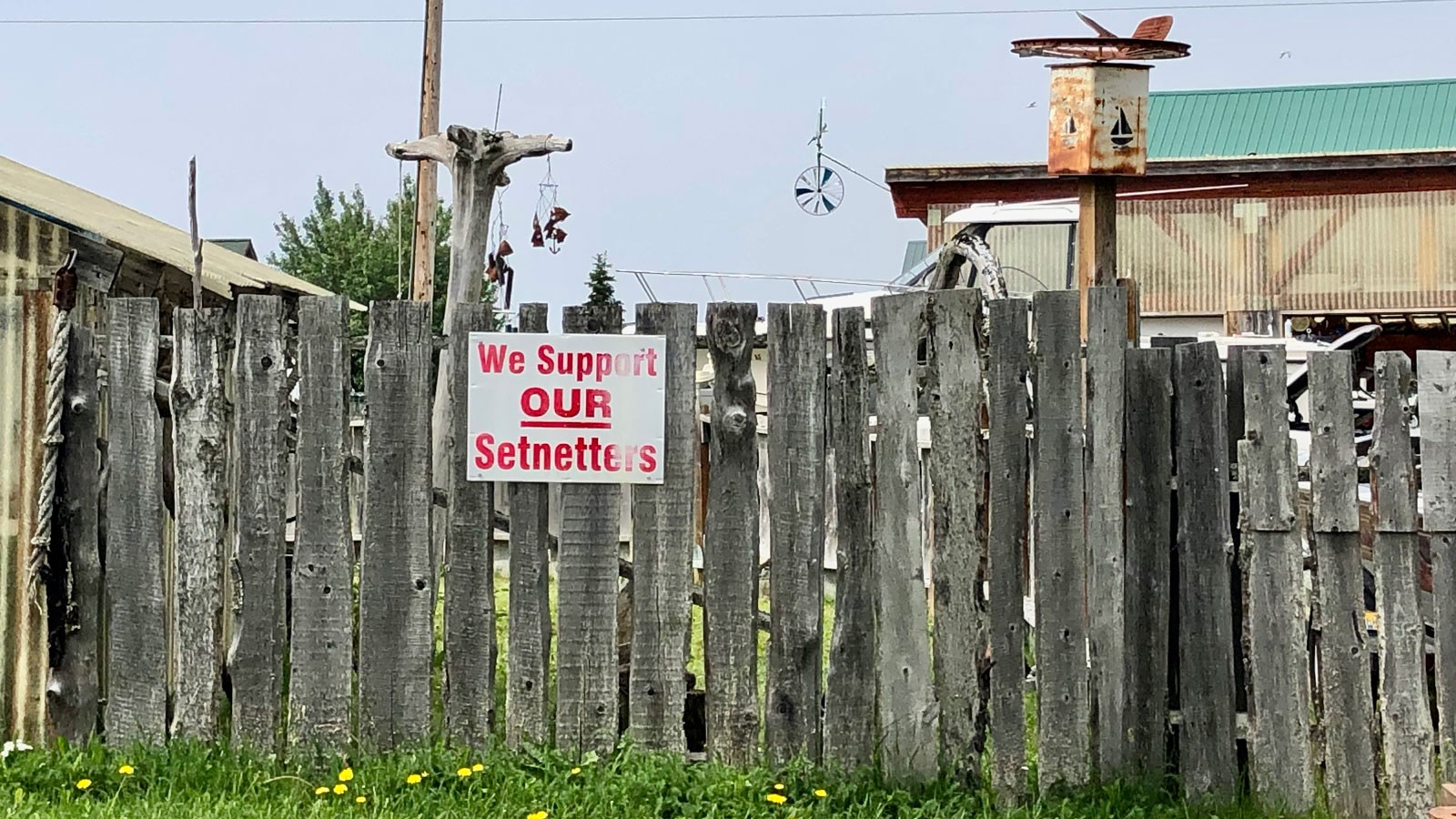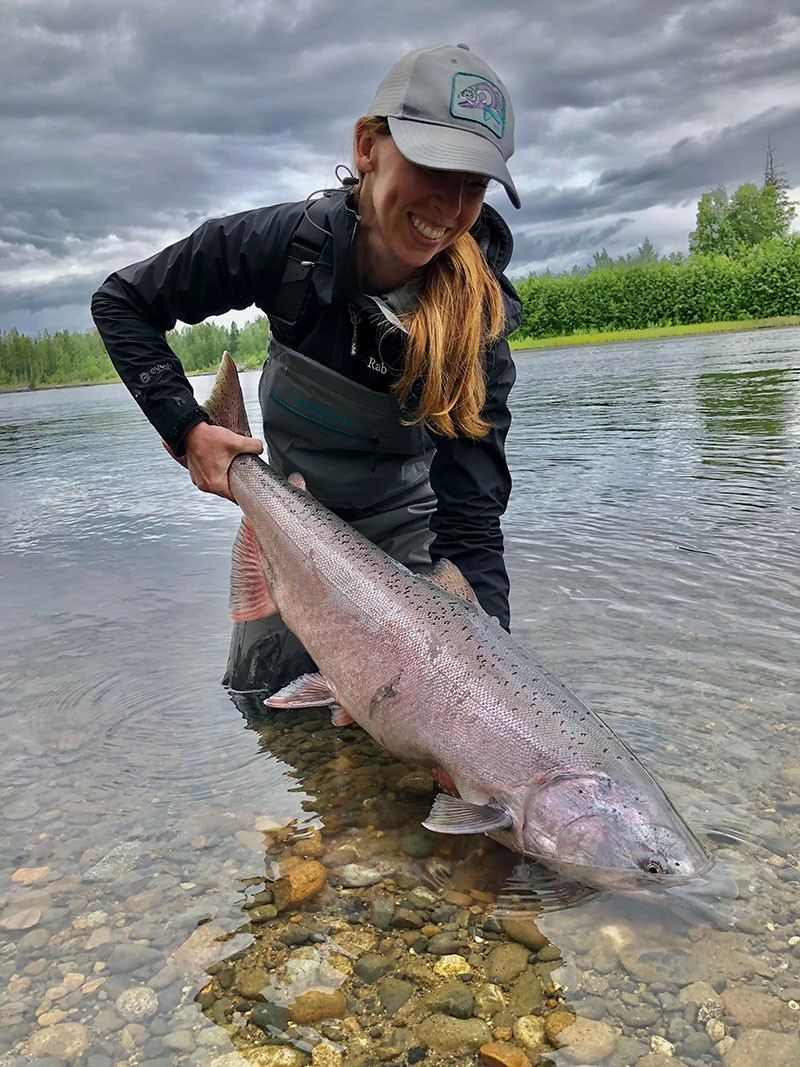Uncharted Waters: Mapping Real Complexity on the Kenai River Fishery
By Lael Gilbert |
Salmon fisheries are complex systems. New research models the region's complex social and ecological structure to help managers understand how their policies will impact the big picture. (Photo Credit: USU/Chase Lamborn)
Real life, unlike most stories we tell, tends to get messy. Take the Kenai River Fishery, where a complex web of people and environment is being pushed to its limits. At the center is an icon of Alaska’s culture and economy teetering on the edge of extinction: the king salmon.
The Kenai River, located just south of Anchorage on the Kenai Peninsula, is the most popular sport fishing destination in the state. It is home to robust commercial operations and a subsistence fishery where many Alaskans gather salmon to fill their freezers for the winter. Recent declines in king salmon have triggered increased regulatory measures to protect the species — and are having profound impacts on the communities that rely on the fishery. Given the complicated and somewhat unpredictable nature of salmon populations, regulations are implemented in short timeframes, making it difficult for people to anticipate whether they’ll have access.
“When everything is going right, it works great — most people are happy — but when something goes wrong, it’s the definition of a wicked problem,” said Chase Lamborn, from the Institute of Outdoor Recreation and Tourism in the Quinney College of Natural Resources, and lead author on recently published research exploring and modeling the topic.
Lamborn spent years working collaboratively with a diverse group of stakeholders to model the region’s complex social and ecological structure and function. The goal was to offer a reality-grounded tool that could be used to organize information, identify threats and prioritize actions within the fishery — which wasn’t an easy task.
Salmon fisheries are anything but simple. The Kenai River is home to five different species of salmon, and each one has its own unique life cycle. King salmon, for example, migrate across vast distances and through diverse habitats from small streams to the open ocean. During this multi-year journey they face predators, battle elements and compete with other fish for food and resources. Their environments are also in constant flux from natural and human forces. But even that doesn’t encompass the entire system.
“When trying to understand salmon, you also have to take into account complex social components,” Lamborn said. “There are diverse groups of people who harvest and depend on salmon. Just looking at the commercial fishery, there are huge differences in how and where people harvest salmon during their migration.”
King salmon are caught by trawler fleets, by seine fishers, drift net fishers and set net fishers. Once they finally make it back to the river, they may be caught by subsistence fishers or sport anglers. Balancing the harvest rates and needs of all of these groups is a nearly impossible task, Lamborn said.
Most research on the fishery to this point has focused on deciphering small elements in the system rather than understanding the big picture, Lamborn said. Researchers tend to go deep into one topic to understand the dynamics of one single species, and it’s another effort entirely to step back, look at a system as a whole, and develop a model that tries to account for all of the social and ecological components and dynamics, he said.
The result is not a simple narrative — but it is a useful one. The model can illustrate, for example, how a change in one piece of habitat could affect salmon returns in the Kenai River, which could impact anglers and commercial fishers, which would then trigger management agencies to alter harvest rates and focus efforts on protecting and restoring habitat.
“The primary utility of a model like this is to have a foundational representation that everyone can gather around, point to, and work from when trying to think through the many complexities that exist when trying to understand and manage a complex social-ecological system like the Kenai,” Lamborn said.
While it took two years to create, this model is really just a starting point, he said. The intent is for the model to be used as a guide by scientists and resource managers, so they can organize information, identify threats, prioritize actions, and ultimately see how a change in one part of the system can affect everything else, he said. In the next phase of this work, the team will be looking into how large-scale disturbance events, like fire, can affect the stability of the system.
“The model will be a foundational piece, for not only our future work in the Kenai, but also for all the other work that is occurring there,” said Lamborn, who is leading the ongoing work. “Right now I hope this model can help people think holistically and creatively to address the dire state of king salmon. If not, the Kenai River will be a very different place in the very near future.”
WRITER
Lael Gilbert
Public Relations Specialist
Quinney College of Natural Resources
435-797-8455
lael.gilbert@usu.edu
CONTACT
Chase Lamborn
Assistant Director of Visitor Use Monitoring and Management
Institute of Outdoor Recreation and Tourism
chase.lamborn@usu.edu
TOPICS
Environment 263stories Wildlife 141stories Ecosystems 129stories Rivers 101stories Outdoor 78storiesComments and questions regarding this article may be directed to the contact person listed on this page.









